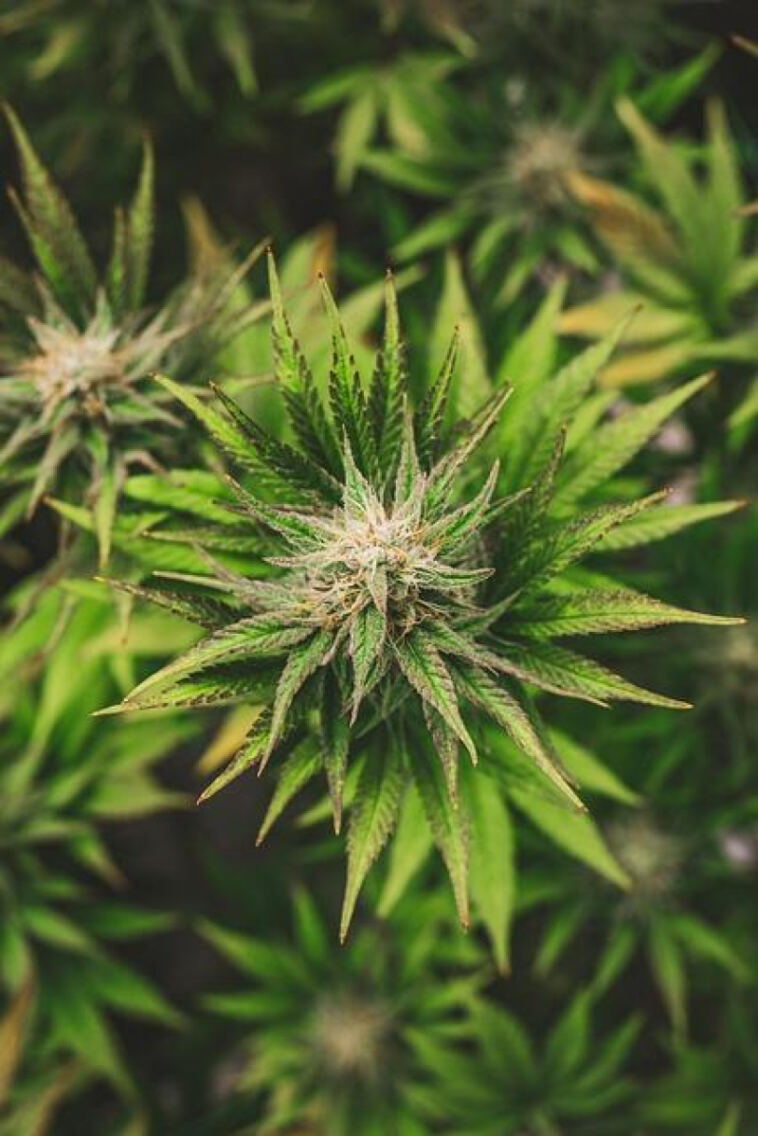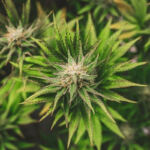- Like
- SHARE
- Digg
- Del
- Tumblr
- VKontakte
- Flattr
- Buffer
- Love This
- Save
- Odnoklassniki
- Meneame
- Blogger
- Amazon
- Yahoo Mail
- Gmail
- AOL
- Newsvine
- HackerNews
- Evernote
- MySpace
- Mail.ru
- Viadeo
- Line
- Comments
- Yummly
- SMS
- Viber
- Telegram
- JOIN
- Skype
- Facebook Messenger
- Kakao
- LiveJournal
- Yammer
- Edgar
- Fintel
- Mix
- Instapaper
- Copy Link
In the vast tapestry of human history, certain plants have played integral roles in shaping cultural beliefs, artistic expression, and spiritual practices. Among these botanical allies, cannabis and psychedelics hold a unique position, eliciting both fervent fascination and fierce controversy. From ancient rituals to modern counter-culture movements, their enigmatic influence has woven itself through the fabric of societies worldwide. Join us on a journey through the mists of time as we explore the complex relationships between humans and these powerful botanical allies in our article, “The Enigmatic Influence: Cannabis and Psychedelics in Cultural History.”
The Ancient Roots of Cannabis and Psychedelics Use
Cannabis and psychedelics have deep-rooted histories that stretch back thousands of years. These substances have played a significant role in various cultures around the world, influencing spiritual practices, healing rituals, and artistic expressions. The ancient civilizations of the Indus Valley, Mesopotamia, and ancient China all have documented use of cannabis for medicinal and ceremonial purposes.
Similarly, psychedelics like ayahuasca, peyote, and psilocybin mushrooms have been used by indigenous tribes in the Americas for spiritual journeys and cultural ceremonies. These substances were believed to connect individuals with the divine, facilitate communication with nature spirits, and induce visions that guided tribal decision-making and healing practices.
Through archaeological evidence and historical accounts, we can trace the enigmatic influence of cannabis and psychedelics on human societies throughout the ages. These substances continue to captivate modern researchers and enthusiasts alike, sparking discussions on their therapeutic potential, cultural significance, and legal status in today’s world.
Exploring Shamanic Practices and Rituals
In the intricate tapestry of shamanic practices and rituals, the use of cannabis and psychedelics has played a central role in various cultures throughout history. These mind-altering substances have been revered for their ability to induce altered states of consciousness, allowing shamans to connect with the spirit world and gain insights beyond the realm of the ordinary.
Cannabis in Shamanic Practices: Cannabis, also known as marijuana, has been used for centuries in shamanic rituals for its psychoactive properties. Shamans have traditionally consumed cannabis to enhance their spiritual experiences, facilitate visions, and commune with the divine. The plant’s ability to open the mind and expand consciousness has made it a powerful tool in shamanic healing ceremonies and divination practices.
Psychedelics as Gateways to the Spirit Realm: Psychedelic substances like psilocybin mushrooms, ayahuasca, and peyote have been used by shamans in indigenous cultures around the world to achieve altered states of consciousness and access the spirit realm. These powerful substances have been valued for their ability to dissolve boundaries between the self and the cosmos, allowing shamans to communicate with ancestral spirits, receive guidance, and heal individuals on physical, emotional, and spiritual levels.
| Substance | Origin | Traditional Use |
|---|---|---|
| Psilocybin mushrooms | Mesoamerica | Entheogenic ceremonies |
| Ayahuasca | Amazon rainforest | Visionary healing rituals |
| Peyote | Native American tribes | Spiritual communion |
The Counterculture Movement and Psychedelic Revolution
In the realm of counterculture movements and psychedelic revolutions, cannabis and psychedelics have played a pivotal role in shaping cultural history. These substances have been enigmatic influences, sparking creativity, expanding consciousness, and challenging societal norms.
Cannabis:
- Known for its calming and euphoric effects, cannabis has been used for centuries for medicinal, spiritual, and recreational purposes. Its association with the counterculture movement of the 1960s led to a shift in attitudes towards marijuana, with advocates touting its therapeutic benefits and pushing for legalization.
Psychedelics:
- Psychedelics like LSD, psilocybin, and mescaline have been hailed for their mind-altering properties, offering users profound experiences that transcend conventional reality. These substances have been embraced by artists, philosophers, and activists seeking to explore the depths of the human psyche and challenge conventional thought.
Modern Perspectives and Applications
Cannabis and psychedelics have played a fascinating role in cultural history, with their enigmatic influence spreading far and wide. These substances have been used by various societies for spiritual, medicinal, and recreational purposes for centuries. The impact of cannabis and psychedelics on art, music, literature, and even social movements cannot be overstated.
The use of cannabis and psychedelics has been intertwined with counterculture movements, providing inspiration for artists and thinkers looking to explore altered states of consciousness. From the Beat Generation writers experimenting with psychedelics to the psychedelic rock bands of the 1960s, these substances have been catalysts for creative expression. Today, the influence of cannabis and psychedelics can still be seen in the art and music of contemporary culture.
In addition to their cultural significance, cannabis and psychedelics are also increasingly being studied for their potential therapeutic applications. Research has shown promising results in using these substances to treat various mental health conditions, such as depression, anxiety, and PTSD. The legalization of cannabis in many parts of the world and the renewed interest in psychedelic therapy are opening up new possibilities for integrating these substances into modern medicine.
Recommendations for Ethical and Responsible Use
Utilizing cannabis and psychedelics in a responsible and ethical manner is crucial in today’s society, especially when considering their enigmatic influence throughout cultural history. To ensure safe and mindful consumption, here are some recommendations to keep in mind:
- Research: Before experimenting with cannabis or psychedelics, it is essential to educate oneself on their effects, risks, and potential benefits. Understanding the substances can help avoid any unforeseen consequences.
- Start Low, Go Slow: When trying a new product or dosage, it is advisable to begin with a low amount and gradually increase over time. This approach can help gauge individual tolerance levels and minimize the risk of overwhelming experiences.
Additionally, creating a supportive and comfortable environment for consumption can enhance the overall experience and promote mindfulness. By following these recommendations, individuals can explore the profound impact of cannabis and psychedelics while prioritizing their well-being and safety.
Q&A
Q: What is the connection between cannabis and psychedelics in cultural history?
A: The use of cannabis and psychedelics has played a significant role in shaping various cultures throughout history.
Q: How have cannabis and psychedelics been utilized in cultural practices?
A: Cannabis and psychedelics have been used for a wide range of purposes, including spiritual rituals, artistic inspiration, and healing ceremonies.
Q: What are some examples of cultures that have incorporated cannabis and psychedelics into their traditions?
A: Cultures such as the ancient Egyptians, Native Americans, and various indigenous tribes around the world have all utilized cannabis and psychedelics in their cultural practices.
Q: How has the perception of cannabis and psychedelics evolved over time?
A: The perception of cannabis and psychedelics has fluctuated over time, from being revered as sacred substances to being demonized and criminalized in certain societies.
Q: What impact has the use of cannabis and psychedelics had on art and music?
A: Many artists and musicians throughout history have credited cannabis and psychedelics with influencing their creative process and inspiring some of their most iconic works.
Q: How have advancements in science and medicine influenced our understanding of cannabis and psychedelics?
A: Recent research in the fields of neuroscience and psychology has shed light on the potential therapeutic benefits of cannabis and psychedelics, leading to a renewed interest in their medicinal properties.
Q: In what ways do cannabis and psychedelics continue to shape contemporary culture?
A: Today, the legalization of cannabis in many countries and the resurgence of interest in psychedelic therapy are indicative of a shifting cultural attitude towards these substances and their potential benefits.
To Wrap It Up
From the ancient civilizations of Egypt and India to the counterculture movements of the 1960s, the enigmatic influence of cannabis and psychedelics on cultural history continues to fascinate and intrigue us. As we navigate the complexities of these substances in our modern society, it is important to reflect on their multifaceted impact on our collective consciousness. By exploring their roles in art, spirituality, medicine, and social movements, we can better understand the profound connections between mind-altering substances and the human experience. And as we continue to unravel the mysteries of cannabis and psychedelics, we are reminded of the endless possibilities that lie within our own minds. Thank you for joining us on this exploration of the enigmatic influence of these substances in cultural history.


